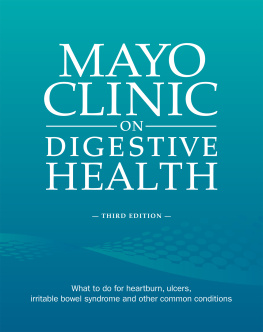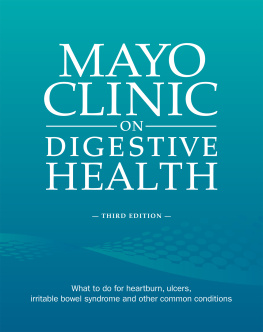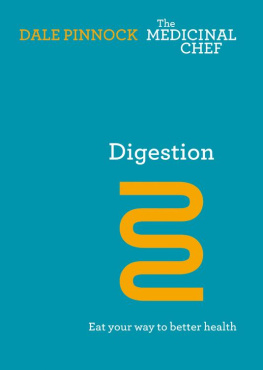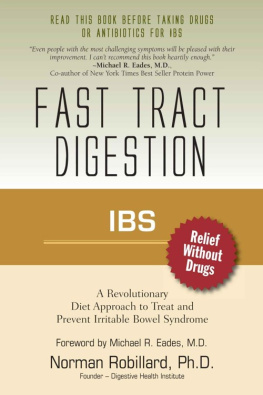Contents

Copyright 2009 by the President and Fellows of Harvard University. All rights reserved. Except as permitted under the United States Copyright Act of 1976, no part of this publication may be reproduced or distributed in any form or by any means, or stored in a database or retrieval system, without the prior written permission of the publisher.
ISBN: 978-0-07-154796-3
MHID: 0-07-154796-7
The material in this eBook also appears in the print version of this title: ISBN: 978-0-07-154795-6, MHID: 0-07-154795-9.
All trademarks are trademarks of their respective owners. Rather than put a trademark symbol after every occurrence of a trademarked name, we use names in an editorial fashion only, and to the benefit of the trademark owner, with no intention of infringement of the trademark. Where such designations appear in this book, they have been printed with initial caps.
McGraw-Hill eBooks are available at special quantity discounts to use as premiums and sales promotions, or for use in corporate training programs. To contact a representative please visit the Contact Us page at www.mhprofessional.com.
Figures I.1, 2.1, 2.2, 3.1, 5.1, 6.1, and 8.1 by Scott Leighton; Figures 4.1 and 4.2 by Michael Linkinhoker; Figure 7.1 by Christopher Bing
The information contained in this book is intended to provide helpful and informative material on the subject addressed. It is not intended to serve as a replacement for professional medical advice. Any use of the information in this book is at the readers discretion. The author, the publisher, and the President and Fellows of Harvard University specifi cally disclaim any and all liability arising directly or indirectly from the use or application of any information contained in this book. A health-care professional should be consulted regarding your specific situation.
TERMS OF USE
This is a copyrighted work and The McGraw-Hill Companies, Inc. (McGraw-Hill) and its licensors reserve all rights in and to the work. Use of this work is subject to these terms. Except as permitted under the Copyright Act of 1976 and the right to store and retrieve one copy of the work, you may not decompile, disassemble, reverse engineer, reproduce, modify, create derivative works based upon, transmit, distribute, disseminate, sell, publish or sublicense the work or any part of it without McGraw-Hills prior consent. You may use the work for your own noncommercial and personal use; any other use of the work is strictly prohibited. Your right to use the work may be terminated if you fail to comply with these terms.
THE WORK IS PROVIDED AS IS. McGRAW-HILL AND ITS LICENSORS MAKE NO GUARANTEES OR WARRANTIES AS TO THE ACCURACY, ADEQUACY OR COMPLETENESS OF OR RESULTS TO BE OBTAINED FROM USING THE WORK, INCLUDING ANY INFORMATION THAT CAN BE ACCESSED THROUGH THE WORK VIA HYPERLINK OR OTHERWISE, AND EXPRESSLY DISCLAIM ANY WARRANTY, EXPRESS OR IMPLIED, INCLUDING BUT NOT LIMITED TO IMPLIED WARRANTIES OF MERCHANTABILITY OR FITNESS FOR A PARTICULAR PURPOSE. McGraw-Hill and its licensors do not warrant or guarantee that the functions contained in the work will meet your requirements or that its operation will be uninterrupted or error free. Neither McGraw-Hill nor its licensors shall be liable to you or anyone else for any inaccuracy, error or omission, regardless of cause, in the work or for any damages resulting therefrom. McGraw-Hill has no responsibility for the content of any information accessed through the work. Under no circumstances shall McGraw-Hill and/or its licensors be liable for any indirect, incidental, special, punitive, consequential or similar damages that result from the use of or inability to use the work, even if any of them has been advised of the possibility of such damages. This limitation of liability shall apply to any claim or cause whatsoever whether such claim or cause arises in contract, tort or otherwise.
Introduction
Some people have an iron stomach and can eat or drink anything without a problem. You probably know a few of these people! That exceptional group not withstanding, most of us do react to what we eat or drink. For some, indigestion happens only rarely, as a result of overindulging in the wrong kinds of food or drink choices, while for othersand you may be in this categorydigestion problems happen much more often.
Living with a Sensitive Stomach
You are probably interested in this book because you have a sensitive stomach: a gastrointestinal (GI) system that reacts strongly to what you put into it.Thisiscalled visceral hyperalgesia, which simply means that you have chronic GI distress. Symptoms of your distress might include diarrhea, constipation, heartburn (also called gastroesophageal reflux disease, or GERD), dyspepsia (recurrent abdominal pain), bloating, or gas.
The problem with such chronic GI distress is that its what is called a functional disorder, which means that there is nothing structurally wrong with your digestion system. There is also no disease present that can be cured. You and your doctor may be frustrated because there is usually no one thing you can dono pill to take, no operation to undergothat will make the problem go away. So, how do you cope?
Living with a sensitive gut takes understanding, a positive attitude, and a commonsense approach to managing your temperamental digestion. The understanding and the commonsense approach will, I hope, come from this book. Your positive attitude may come from the fact that while your digestion problems are both real and difficult, they are not life threatening. Moreover, as you will see as you read further, they do not have to be a burden or interfere with your daily activities.
How to Use This Book
The focus of this bookas well as of the Four-Week Plan for Healthy Digestionis first and foremost on healthy nutrition. As the saying goes, you are what you eat. I would expand that concept to digestion: your digestion depends on what and even how you eat. Every digestion problem discussed in this book is closely tied not only to everything that goes into your mouthincluding foods, beverages, medications, vitamins, supplements, snacks, and even that after-dinner mintbut also to your method of eating. For example, do you inhale your food without taking the time to chew it fully? Do you eat in an atmosphere of stress? These habits are not conducive to digestive health. By contrast, calm, slow mealtimes and chewing every bite thoroughly both help to improve your digestion.
The key to a healthy, comfortable digestion is mindfulness about what you eat and how you eat, as well as close attention to your symptoms. To help you, I have included a Food and Symptom Log in , Communicating with Your Doctor, offers suggestions on how to do this.
The first chapter describes the Four-Week Plan in general terms. Chapters on specific symptoms follow, and you can pick and choose the sections that apply to you. In those chapters, you will find more detailed guidance about using the Four-Week Plan, including which foods to avoid or include, as well as any specific lifestyle changes has some delicious and digestion-friendly recipes, organized according to symptom.
About Me
In more than forty-five years of practicing, teaching, and writing about gastrointestinal medicine, I have seen thousands of patients with complaints just like the ones that you may be enduring: painful and uncomfortable digestive problems that interfere with daily life. In caring for these patients, I have come to two important realizations:









